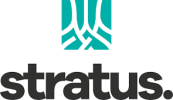In the vast fields of European agriculture, sustaining soil fertility while mitigating nutrient losses is a challenge. As farmers grapple with the complexities of integrated fertilisation management, a critical need emerges for a unified approach. In this context, the EU-funded STRATUS project aims to connect advisors across the continent. Specifically, STRATUS aims to accelerate knowledge creation and sharing, guiding farmers in implementing sustainable practices aligned with the ambitious Farm-to-Fork and biodiversity strategies. By identifying 48 best practices, the project supports farmers and fosters local adaptation through 10 Communities of Practice, ensuring integration into the Agricultural Knowledge and Innovation Systems of Member States.
STRATUS, extending over 60 months, aims to connect advisors across Europe for accelerating knowledge creation and sharing on Integrated Fertilisation Management, supporting farmers to bring this knowledge into practice to achieve the ambition of the Farm to Fork and Biodiversity Strategies, thus reducing nutrient losses to the environment while maintaining soil fertility.
For this, STRATUS will create an EU-wide advisory network through the creation of three transnational sub-networks (Fertilisation Innovation Networks - FIN) on Precision farming, Bio-based fertilisers and Soil quality (SQ) in which trained advisors will collect a total of 104 Good Practices (GPs) and Research Innovations (RIs) on optimal fertiliser use and will identify at least 48 Best Practices (BPs) as the result of the systemic feasibility assessment of the GPs and RIs . In addition, STRATUS will also ensure the integration of the advisors in the MS AKIS as well as the adaptation of the project work to the local conditions through the creation of 10 Communities of Practices (CoPs), in 10 partners countries, established with local AKIS actors, following the MA approach. Based on these BPs, STRATUS will develop 60 demonstrations and training material that will facilitate advisors to exchange knowledge, experiences and key challenges for advisory practice through Cross Visits in all MS and CoPs. All the knowledge generated in the project will become available through an inventory hosted in the digital platform of the STRATUS project. STRATUS will determine the model for the exploitation model of the platform besides the self-sustainability of the EU-wide advisory network .
STRATUS will cover all EU27 MS, eleven (11) MS are covered directly by project partners, while the other are covered through being members of EUFRAS and SEASN and projects advisory organisations in charge of mirroring knowledge exchange.
Project ID
Funding period
1 February 2024 - 31 January 2029EU contribution
Funding programme
Call for proposals
Type of action
Type of stakeholder
Project contribution to Mission Soil’s:
Specific objectives
-
 1. Reduce land degradation relating to desertification
Not targeted
1. Reduce land degradation relating to desertification
Not targeted -
 2. Conserve and increase soil organic carbon stocks
Not targeted
2. Conserve and increase soil organic carbon stocks
Not targeted -
 3. No net soil sealing and increase the reuse of urban soils
Partially targeted
3. No net soil sealing and increase the reuse of urban soils
Partially targeted -
 4. Reduce soil pollution and enhance restoration
Not targeted
4. Reduce soil pollution and enhance restoration
Not targeted -
 5. Prevent erosion
Not targeted
5. Prevent erosion
Not targeted -
 6. Improve soil structure to enhance habitat quality for soil biota and crops
Partially targeted
6. Improve soil structure to enhance habitat quality for soil biota and crops
Partially targeted -
 7. Reduce the EU global footprint on soils
Not targeted
7. Reduce the EU global footprint on soils
Not targeted -
 8. Increase soil literacy in society across Member States
Partially targeted
8. Increase soil literacy in society across Member States
Partially targeted
Operational objectives
-
1. Build capacities and the knowledge base for soil stewardship
Targeted
-
2. Co-create and upscale place-based innovations to improve soil health in all places
Partially targeted
-
3. Develop an integrated EU soil monitoring system and track progress towards soil health
Not targeted
-
4. Engage with the soil user community and society at large
Partially targeted
Innovation hotspots
-
1. Carbon farming
Not targeted
-
2. Soil pollution and restoration
Targeted
-
3. Soil biodiversity including the microbiome
Not targeted
-
4. Circular economy solutions
Not targeted
Cross-cutting dimensions
-
1. Business
Partially targeted
-
2. Digital
Not targeted
-
3. Territorial
Partially targeted
-
4. International
Not targeted
© European Union, 2024. Image sources: Adobe.Stock.com
